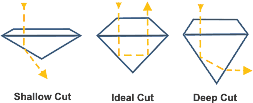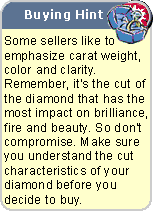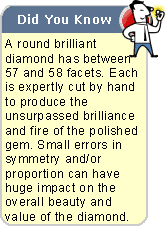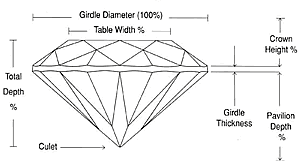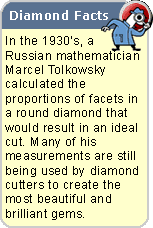

|
Definition: Rough diamonds can be cut by experts to virtually any shape and size; some of the most popular cuts are round, oval, princess, emerald, marquise, pear, heart, triangle and radiant. The cut of a polished diamond is the only human contribution to its beauty, fire and brilliance.
Because of its extraordinary ability to reflect light, the round brilliant diamond is the most popular cut today. Cut determines amount of reflected light that exits through the top of a diamond. The better the cut, the more light exits through the top, the more brilliant and beautiful the diamond. |
|||||||||||||||||||||||||||
|
Is
cut important?
A poorly cut diamond will appear relatively dull, even if clarity and color are perfect. When light is reflected through the sides and bottom of the diamond, not the top, brilliance and fire are dramatically reduced. |
The 'well-cut' diamond reflects almost all the light through the top; it will be the most beautiful, and the most valuable. |





